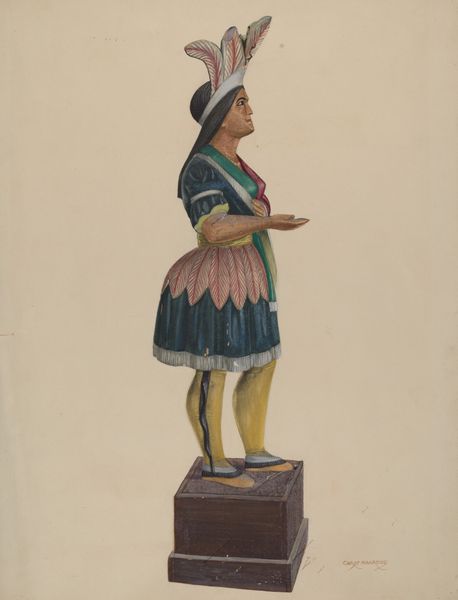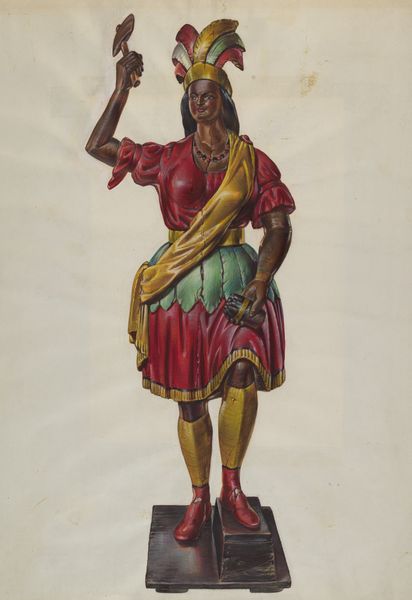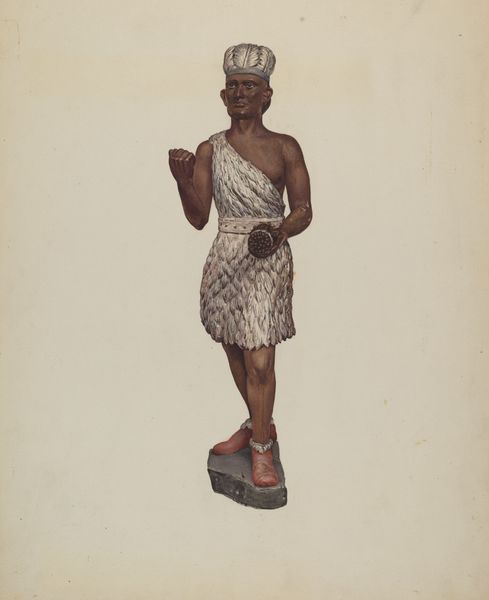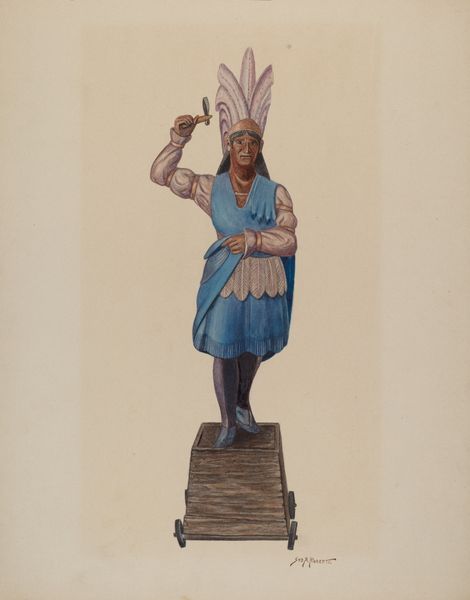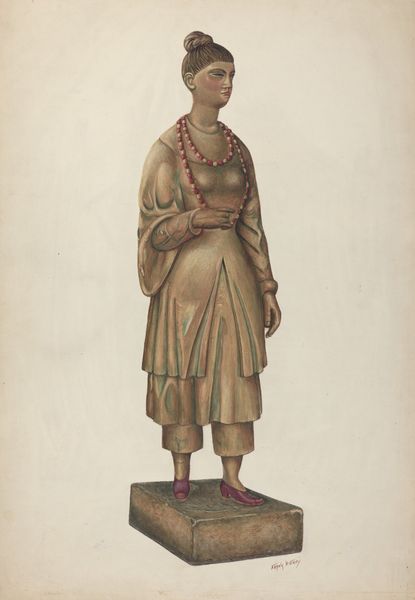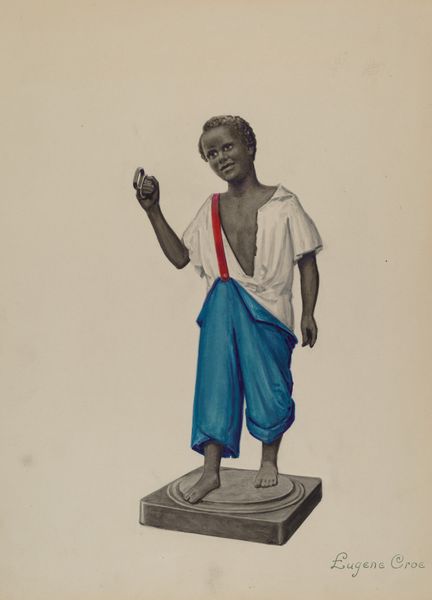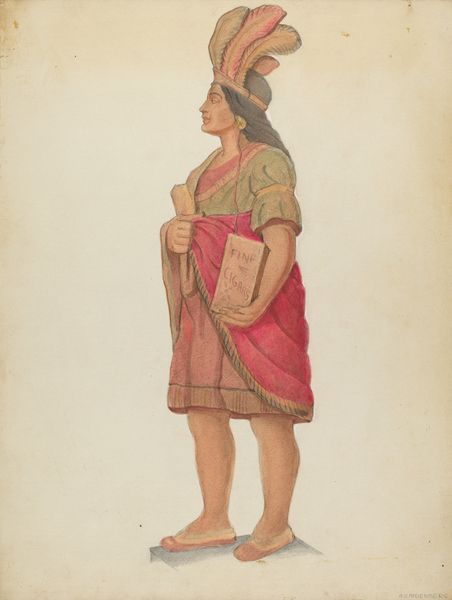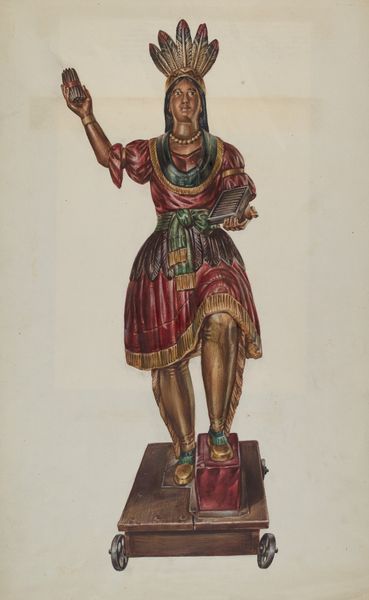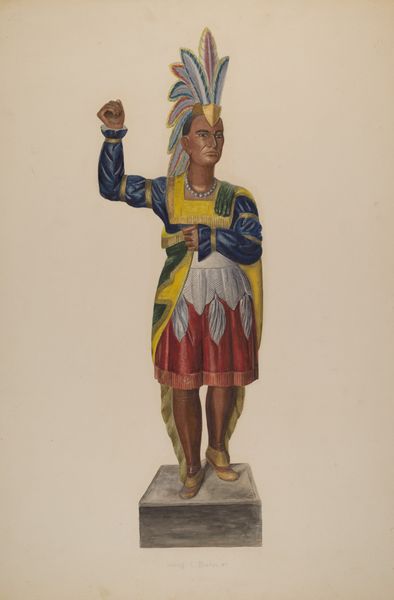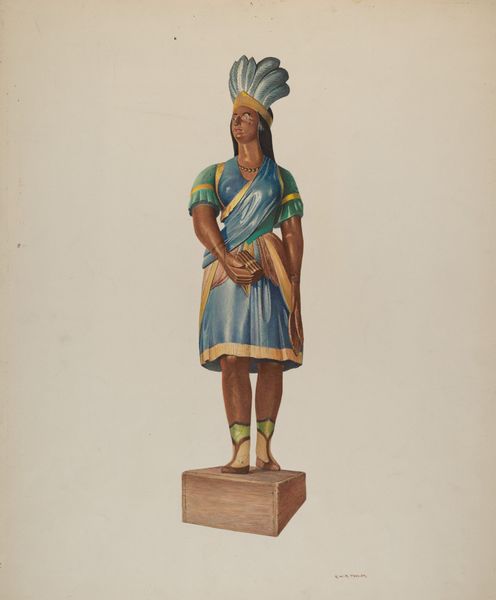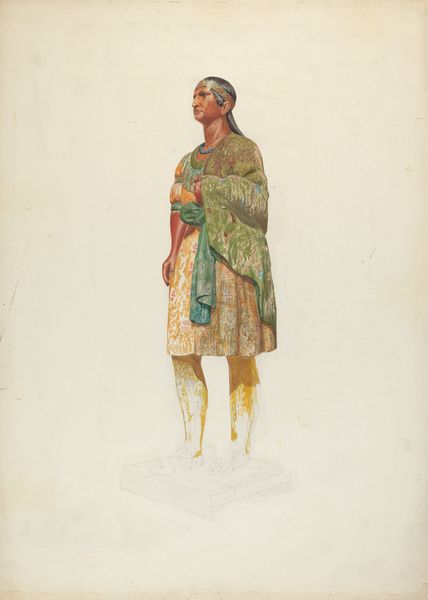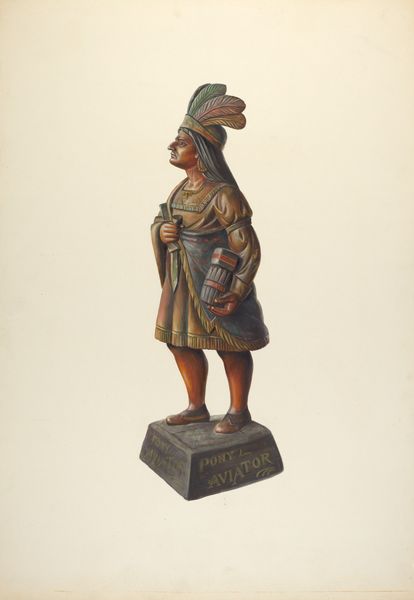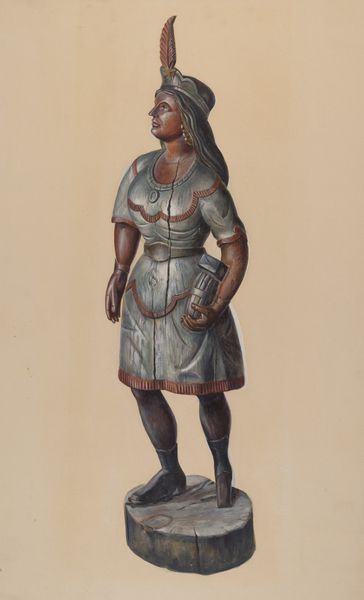
drawing, paper
#
drawing
#
charcoal drawing
#
figuration
#
paper
#
oil painting
#
portrait drawing
#
portrait art
#
fine art portrait
Dimensions: overall: 45.6 x 33.1 cm (17 15/16 x 13 1/16 in.)
Copyright: National Gallery of Art: CC0 1.0
Editor: This is Dorothy Hay Jensen’s "Cigar Store Indian," painted between 1935 and 1942, using watercolor and charcoal, it appears. I’m immediately struck by how delicately it renders a figure historically charged with complicated symbolism. How would you interpret this piece? Curator: The very name "Cigar Store Indian" is loaded, isn't it? Consider what these figures represented in American culture: a romanticized, often inaccurate, portrayal of Native Americans used to lure customers. Jensen’s delicate watercolor rendering is interesting, almost like a ghost of that past commercial use, a softening of what was quite a harsh objectification. Do you see a kind of tension between the stereotypical subject and the artful treatment? Editor: I do. The choice of watercolor, the almost pastel shades… It doesn’t scream, "commodity," like the wooden statues would have. So is Jensen commenting on the legacy of colonialism or just… observing it? Curator: Perhaps both. This was the 1930s. Think about the broader cultural context: the Depression, a yearning for a simpler, perhaps imagined, past. The "Indian" figure already carried a heavy weight of cultural memory – of lost lands, of broken treaties. Jensen seems to be holding that memory, almost reverentially, in her art. Note the almost reverential upward glance. The colors are of the earth, connecting this figure to something primal. Editor: It's like she’s reclaiming the image, imbuing it with dignity, even though it’s still referencing that original commercial form. Curator: Precisely. By taking something so ingrained in commercial culture and turning it into art, Jensen prompts us to look again, to question the stories we tell ourselves through these images. The emotional and psychological weight shifts. We see not just a cigar store figure, but perhaps a spirit. Editor: That’s a very helpful perspective. It makes me consider how images from the past continue to affect us. Curator: And how artists can engage with those images to transform their meaning. I found this discussion really interesting!
Comments
No comments
Be the first to comment and join the conversation on the ultimate creative platform.

